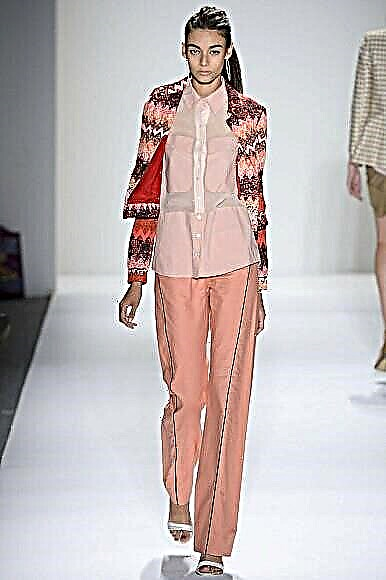Share
Pin
Tweet
Send
Share
Send
From ordinary fabrics you can sew fashionable interior accessories in the style of patchwork and shabby chic.
MAT
Size approx. 148 x 128 cmYOU WILL NEED
On 1,60 m of rough linen or cotton of natural and lilac color, 140 cm wide; fabric for the back side 1.60 m long, 140 cm wide, volumeflyz size. 144 x 12 cm thick approx. 1 cm, threads of natural color, 1 ball (50 g) of thread for knitting or wool for embroidery in black, 1 needle for embroidery with a sharp tip, pencil or aqua trick marker.
DESCRIPTION OF WORK
From linen of natural color in a straight thread, cut out:
1 rectangle size 148 x 128 cm.
On this rectangle (= upper side of the rug) draw a picture of the skin of a zebra, see photo). The pattern should be approximate and such that sufficiently large areas appear that can then be embroidered with threads of contrasting color. At corners at a distance of approx. 10-15 cm from the slices start and finish the picture.
TIP The aqua trick marker is most suitable for creating such a sketch, as its lines when spraying water immediately disappear without a trace.
According to the dimensions of the upper side of the mat, cut out the lower side of the upper side of the mat and there is less than 2 cm for each section a smaller volumenfliz gasket. Fold the three layers together (at the top there is linen of natural color, at the bottom there is a gasket) and, starting from the middle, sweep away in the form of star rays.Along the outline of the pattern, lay large straight stitches “forward the needle” with contrasting black wool through all three layers (see photo). On the legs, you can leave the ends of the threads hanging. With sharp scissors, cut the inner sections (see photo) of only the top layer of fabric (natural color), then cut close to the contrasting stitches at a distance of 0.75 cm. This technique is called “reverse application”. As a result, you have a contrasting motive.
Fold the top side (of three layers) with the bottom side of the mat and grind all three layers on the machine in the open. Cut the protruding layers close to the line.
TIP You can use the rug as a blanket or bedspread for a bed, sofa or chair.
PILLOW
Size: approx. 60 x 60 cm.YOU WILL NEED
Linen or cotton 80 cm long, 140 cm wide lilac, black velvet 80 cm long, about 70 x 70 cm of linen or cotton white and oil color; threads for sewing purple. 1 zipper 45 cm long, 1 tailor's chalk, padding suitable in size.
DESCRIPTION OF WORK
From a velvet in a straight thread, cut:
1 front side of pillow size 63 x 63 cm
From flax to carve:
1 back side of pillow size 53 x 63 cm
1 square size 70 x 70 cm.
All sizes include 1.5 cm wide allowances.
Circle the two identical sides of the pillow with a zigzag. Portnovsky chalk draw wavy lines with an interval of approx. 10 cm apart on a flap size. 70 x 70 cm. Cut along the wavy lines and individually chop on a white square. Cut off the white stripes, leaving protruding allowances for the cuts approx. 0.5 cmTwo layers of fabric (lilac and white) to connect and chop a square of oil color. Cut the oil-colored waves again, leaving protruding allowances of approx. 0.5 cm. Connect the three wavy strips diagonally at some distance from each other so that the black front side of the pillow is visible, chopped off. In this case, the wavy stripes can be twisted and shifted up or down. Continue to lay waves until the resulting view of the front of the pillow satisfies you.
Finally tear the strips, stitch them with purple threads at a distance of 1 cm from the cut of the purple fabric (or sew manually). The edges of the rectangular side of the pillow, if necessary, level and overcast. Fold the front and back sides of the pillow face to face and grind one side on both sides to a width of 9 cm. To allow the ironing allowances to be sewn and to fasten the zipper into the hole. Stitch the rest of the pillow, open the zipper. Cut allowances at the corners close to the seam. Turn out the pillow.
Using a brush or manually, process slices of stitched waves so that a small fringe appears. Put stuffing in the pillow.
Photo: Matteo Manducio. Production: Natasha Sanvald.
The material was prepared by Elena Karpova.
Share
Pin
Tweet
Send
Share
Send






